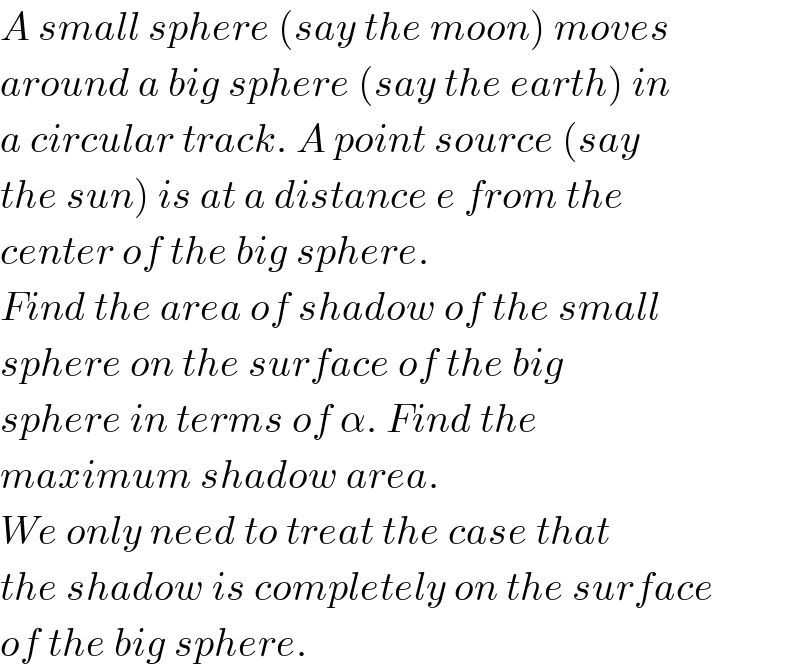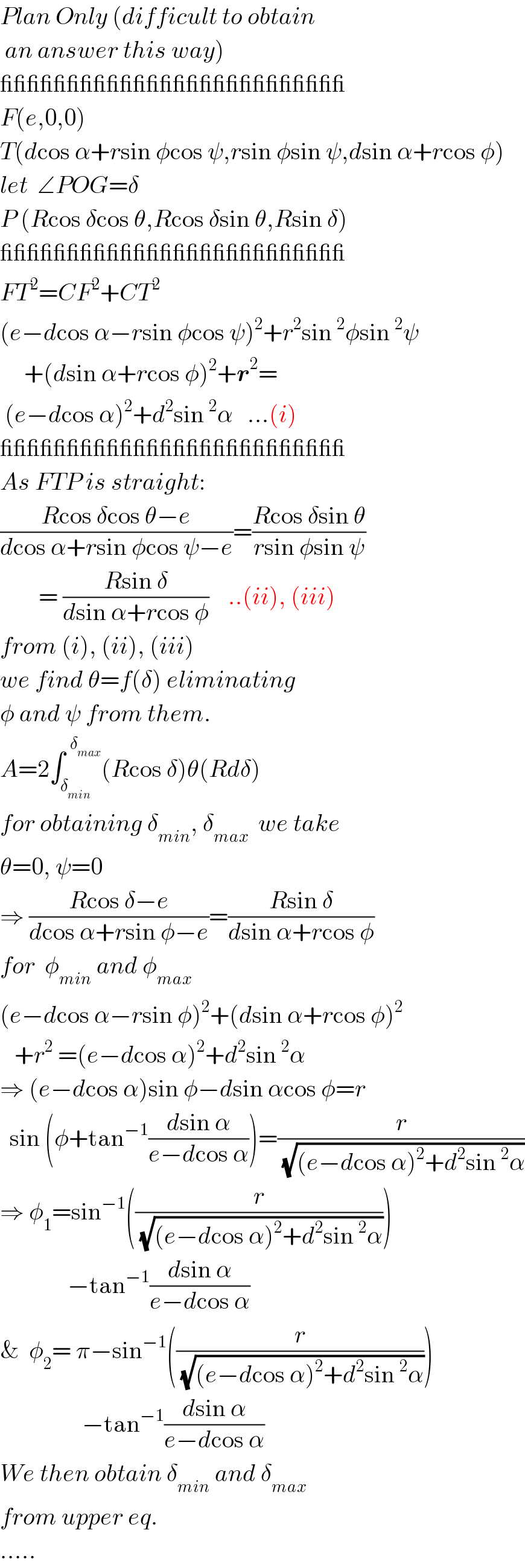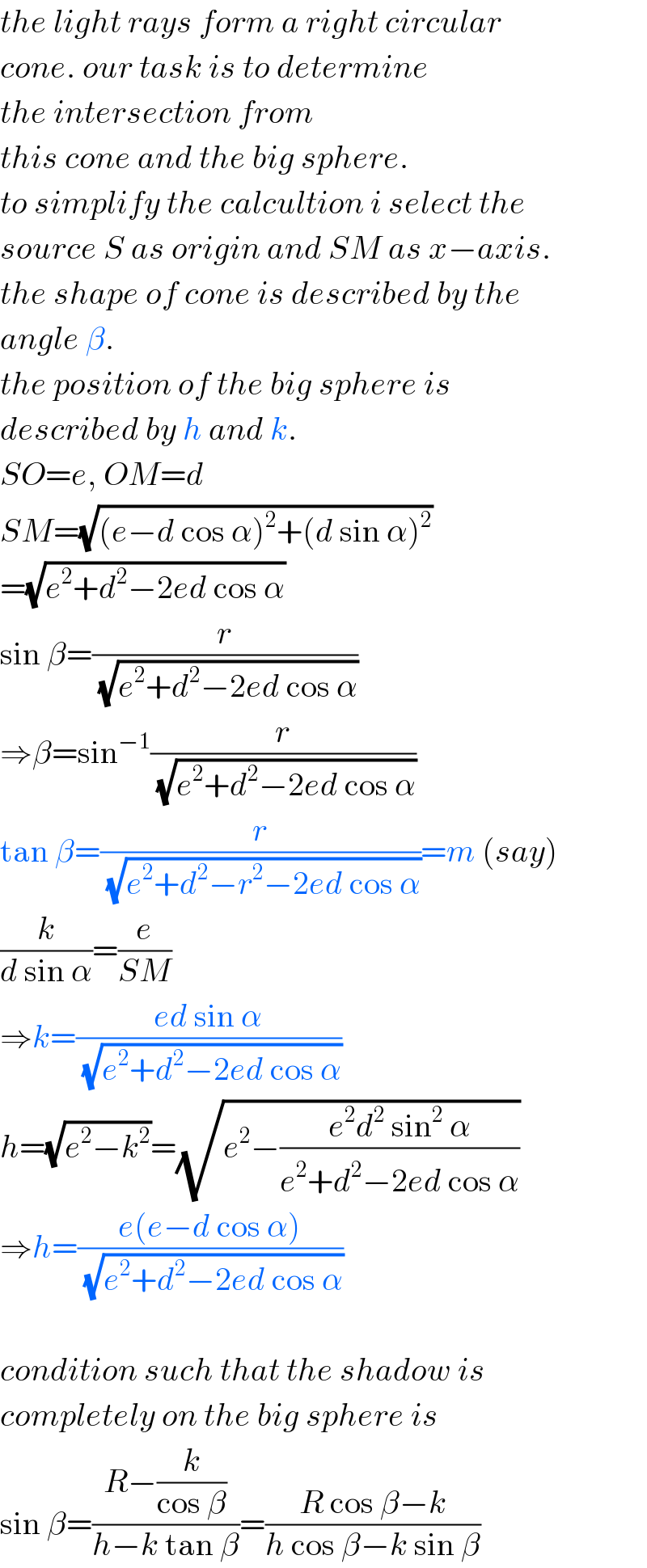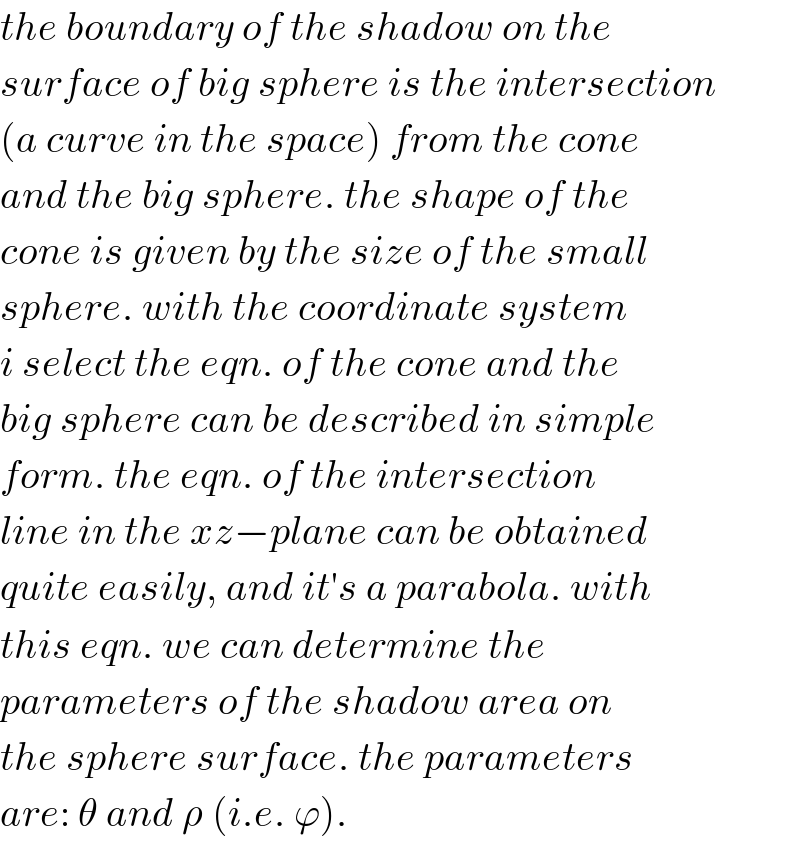
Question and Answers Forum
Question Number 61303 by mr W last updated on 31/May/19

Commented by mr W last updated on 31/May/19

Commented by ajfour last updated on 02/Jun/19

Commented by mr W last updated on 01/Jun/19

Answered by ajfour last updated on 02/Jun/19

Answered by mr W last updated on 02/Jun/19

Commented by mr W last updated on 02/Jun/19

Commented by mr W last updated on 02/Jun/19

Commented by mr W last updated on 03/Jun/19
![eqn. of cone: x=((√(y^2 +z^2 ))/(tan β))=((√(y^2 +z^2 ))/m) or y^2 =m^2 x^2 −z^2 eqn. of sphere: (x−h)^2 +y^2 +(z+k)^2 =R^2 intersection of cone and sphere: (x−h)^2 +m^2 x^2 −z^2 +(z+k)^2 =R^2 ⇒(1+m^2 )x^2 −2hx+2kz+(h^2 +k^2 −R^2 )=0 ...(i) (this is a parabola in xz−plane) at θ: let ρ=R−Δh x=h−ρ cos θ z=−k+ρ sin θ put this into (i): (1+m^2 )[h−ρ cos θ]^2 −2h[h−ρ cos θ]+2k[−k+ρ sin θ]+(h^2 +k^2 −R^2 )=0 (1+m^2 )cos^2 θ ρ^2 −2(m^2 h cos θ−k sin θ)ρ+(m^2 h^2 −k^2 −R^2 )=0 ⇒ρ=(((m^2 h cos θ−k sin θ)+(√(m^4 h^2 cos^2 θ+k^2 sin^2 θ−2m^2 hk sin θ cos θ−(1+m^2 )cos^2 θ(m^2 h^2 −k^2 −R^2 ))))/((1+m^2 )cos^2 θ)) (two intersections, we take + for the left one) ⇒ρ=R cos ϕ=(((m^2 h cos θ−k sin θ)+(√(k^2 +[(1+m^2 )R^2 −m^2 (h^2 −k^2 )]cos^2 θ−m^2 hk sin 2θ)))/((1+m^2 )cos^2 θ)) ⇒ϕ=cos^(−1) {(((m^2 h cos θ−k sin θ)+(√(k^2 +[(1+m^2 )R^2 −m^2 (h^2 −k^2 )]cos^2 θ−m^2 hk sin 2θ)))/((1+m^2 )R cos^2 θ))} for ρ=(((m^2 h cos θ−k sin θ)+(√(k^2 +[(1+m^2 )R^2 −m^2 (h^2 −k^2 )]cos^2 θ−m^2 hk sin 2θ)))/((1+m^2 )cos^2 θ))=R we get θ_1 and θ_2 . Area of shadow=A A=∫_θ_1 ^θ_2 2RϕRdθ ⇒A=2R^2 ∫_θ_1 ^θ_2 cos^(−1) {(((m^2 h cos θ−k sin θ)+(√(k^2 +[(1+m^2 )R^2 −m^2 (h^2 −k^2 )]cos^2 θ−m^2 hk sin 2θ)))/((1+m^2 )R cos^2 θ))}dθ with μ=(k/R),λ=(h/R) ⇒A=2R^2 ∫_θ_1 ^θ_2 cos^(−1) {((m^2 λ cos θ−μ sin θ+(√(μ^2 +[1+m^2 (1+μ^2 −λ^2 )]cos^2 θ−m^2 λμ sin 2θ)))/((1+m^2 )cos^2 θ))}dθ](Q61413.png)
Commented by mr W last updated on 02/Jun/19

Commented by mr W last updated on 02/Jun/19

Commented by mr W last updated on 02/Jun/19

Commented by mr W last updated on 02/Jun/19

Commented by ajfour last updated on 02/Jun/19

Commented by mr W last updated on 02/Jun/19

Commented by ajfour last updated on 06/Jun/19

Commented by mr W last updated on 06/Jun/19

